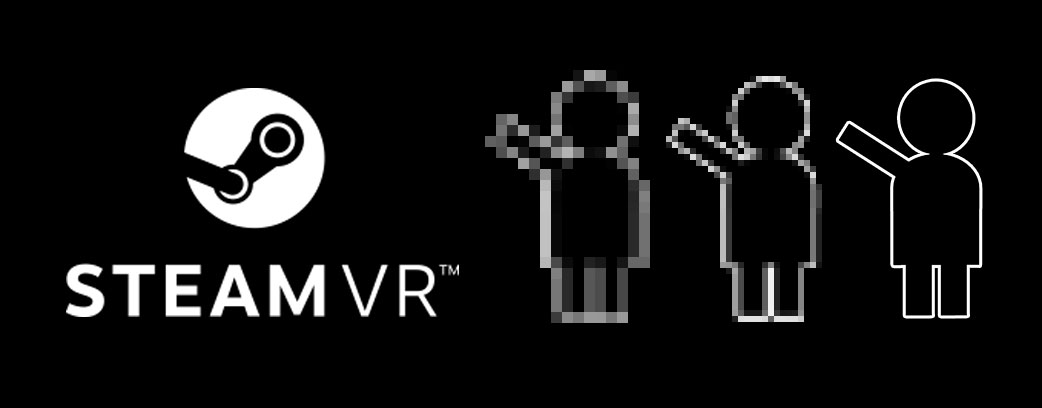Auto-Resolution Scaling Keeps First-Gen 'VR Ready' PCs Relevant
Valve's new update for the SteamVR Beta enables automatic resolution scaling to utilize your GPU's resources more efficiently. The new rendering method empowers entry-level VR-Ready PCs to take on the new high-resolution HMDs. It can also better utilize the power of high-end GPUs.
Two years ago, when virtual reality broke into the consumer market, Valve and Oculus put a lot of effort into defining the minimum requirements for virtual reality experiences. The two companies came to essentially the same conclusion: Comfortable VR requires 90Hz displays and graphics cards powerful enough keep the pace at 90fps or better without skipping a beat. For the HMDs of the time, that meant that you would need at least an Nvidia GeForce GTX 970 or an AMD Radeon R9 290/390 for enjoyable VR. Since then, the story has emained largely the same, although Oculus and Valve have both developed reprojection technologies that enable smooth experiences with slightly lower-end graphics cards.
Breathing New Life Into Old GPUs
These days, however, we have access to HMDs that offer much higher resolution than the original Vive and Rift headsets. Several hardware partners recently released high-resolution HMDs for Microsoft’s Windows Mixed Reality platform, which all feature resolutions of at least 2880x1440 pixels, which is a significant bump from the 2160x1200-pixel setups in the Vive and Rift. Further, HTC is gearing up to release the Vive Pro, which boasts a 78% increase in pixel count compared to the original unit.
With such significant increases in pixel count, it stands to reason that you would need a more powerful GPU to drive these headsets. However, Valve's new resolution scaling technology for SteamVR levels the playing field and enables you to run these new HMDs on older hardware.
Valve’s auto-resolution scaling system measures the performance of your hardware and adjusts the output resolution to match your PC's capabilities. If your graphics card has trouble keeping the motion-to-photon latency below 13ms while rendering content at your HMD's native resolution, SteamVR will lower the resolution to make up the difference.
“All GPUs will be set to render at an appropriate resolution for the attached headset based on the GPU in their machine,” said Alex Vlachos, Valve Graphics Programmer. “So, if you already have a ‘VR Ready PC’ or a ‘VR Ready GPU,’ that hardware will work fine even with the newest high-resolution VR headset on the market.”
Advantages For High-End Hardware
Valve’s new scaling technology also takes advantage of your hardware’s untapped performance. If the native resolution of your HMD doesn’t push the limits of your graphics card, SteamVR will scale the resolution up to match your hardware’s potential.
Get Tom's Hardware's best news and in-depth reviews, straight to your inbox.
Valve said the new resolution scaling system works in the background. The SteamVR runtime does all the heavy lifting and automatically adjusts the output. However, you can always go into the SteamVR video settings menu to manually override the settings.
Simplifying the Lives of Developers
The automatic resolution scaling system should be of great benefit to anyone with a VR headset, but it's especially useful for game developers. When the Vive and Rift came out, game devs had a unified resolution target to optimize for. With the Windows MR headsets available and the Vive Pro on the way, developers must optimize for several rendering resolutions. But with SteamVR’s new auto-resolution scaling feature, developers can optimize for the lowest common denominator and allow the SteamVR runtime to take care of the rest.
The new feature also saves developers from having to update their already released content to enable support for new headsets. Further, Valve’s technology can compensate for higher refresh rate displays when those eventually land in future VR headsets. Valve said that it measures performance by the number of “VR megapixels per second” that your hardware can render, so if you need a higher refresh rate, SteamVR can lower the resolution to free up bandwidth in the rendering pipeline.
Valve’s new auto-resolution scaling technology is available now in the SteamVR Beta channel. The company didn’t say when it expects to deploy the new technology to the main SteamVR channel, but it typically takes a few weeks for the company to sort out the bugs and transition beta releases to the main channel.
Kevin Carbotte is a contributing writer for Tom's Hardware who primarily covers VR and AR hardware. He has been writing for us for more than four years.
-
derekullo I remember a game from the 2000-2010 that's game engine would automatically lower settings to keep a steady 60 fps, but I can't seem to remember the name.Reply
It was a popular game with a 1 word title.
This article reminded me of it. -
BryanFRitt So future hardware quality benchmarks are going to be gauged in terms of resolution at a framerate, instead of framerate at a resolution?Reply -
Dosflores Reply20794268 said:So future hardware quality benchmarks are going to be gauged in terms of resolution at a framerate, instead of framerate at a resolution?
Yes, whenever you're talking about VR. In VR, framerate isn't relevant. If you can't reach the refresh rate of your HMD, your graphics card and/or CPU aren't suitable for VR anyway. If your PC can surpass the refresh rate of your HMD, it isn't useful since you can't disable V-Sync or use something like G-Sync or Freesync. -
derekullo Reply20794023 said:@Derekullo are you thinking of Id Software's Rage maybe
Yep that was it.
Thanks.
